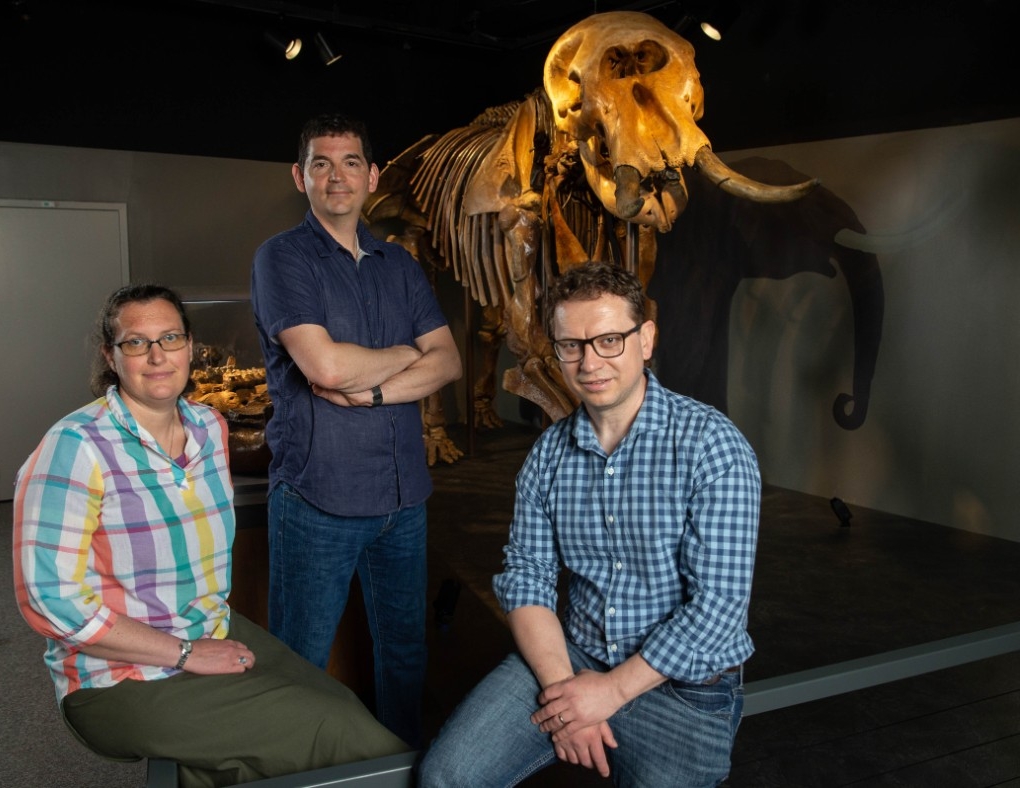The New York Times highlighted research by geologists and anthropologists at the University of Cincinnati who used isotopic analysis to track the seasonal migration of a mastodon that died in a fight with another mastodon more than 13,000 years ago.
UC College of Arts and Sciences researchers Joshua Miller, Brooke Crowley and Bledar Konomi worked with University of Michigan professor Daniel Fisher to study a bull mastodon nicknamed Fred who died at age 34 after being impaled by the tusk of another mastodon.
Researchers studied the strontium and oxygen isotopes from Fred's tusk to track his seasonal movements over what is now Indiana, Ohio, Illinois and Michigan. They found that as a young elephant living with his natal herd, Fred roamed very little. But as an adolescent around age 13, he left the herd much like modern elephants do today to strike out on his own.
He began traveling farther from where he was born. They found evidence that the mastodon made seasonal pilgrimages to northeast Indiana where he met his demise. This time of year coincides with what researchers believe was the mastodon's breeding season.
Miller, an assistant professor of geology, told the New York Times that researchers would like to know if mastodons competed for the same resources as the mammoths that shared their Ice Age environment.
"Did they go to the same place, and this is just a crazed region of hormonally-charged proboscideans?" Miller asked.
With new tools, researchers can answer more questions about these long-extinct animals that still inspire our imaginations.
Read the New York Times story.
Featured image at top: Fred the mastodon roamed what is now Ohio more than 13,000 years ago. Photo/Eric Bronson/Michigan Photography

UC associate professor Brooke Crowley, assistant professor Joshua Miller and associate professor Bledar Konomi collaborated with the University of Michigan on a study of a mastodon that died during the Ice Age 13,000 years ago. Photo/Andrew Higley/UC Marketing + Brand






